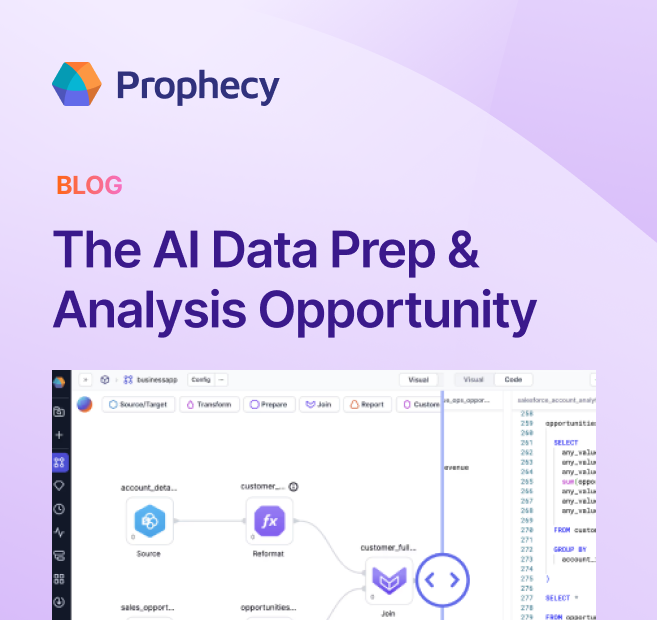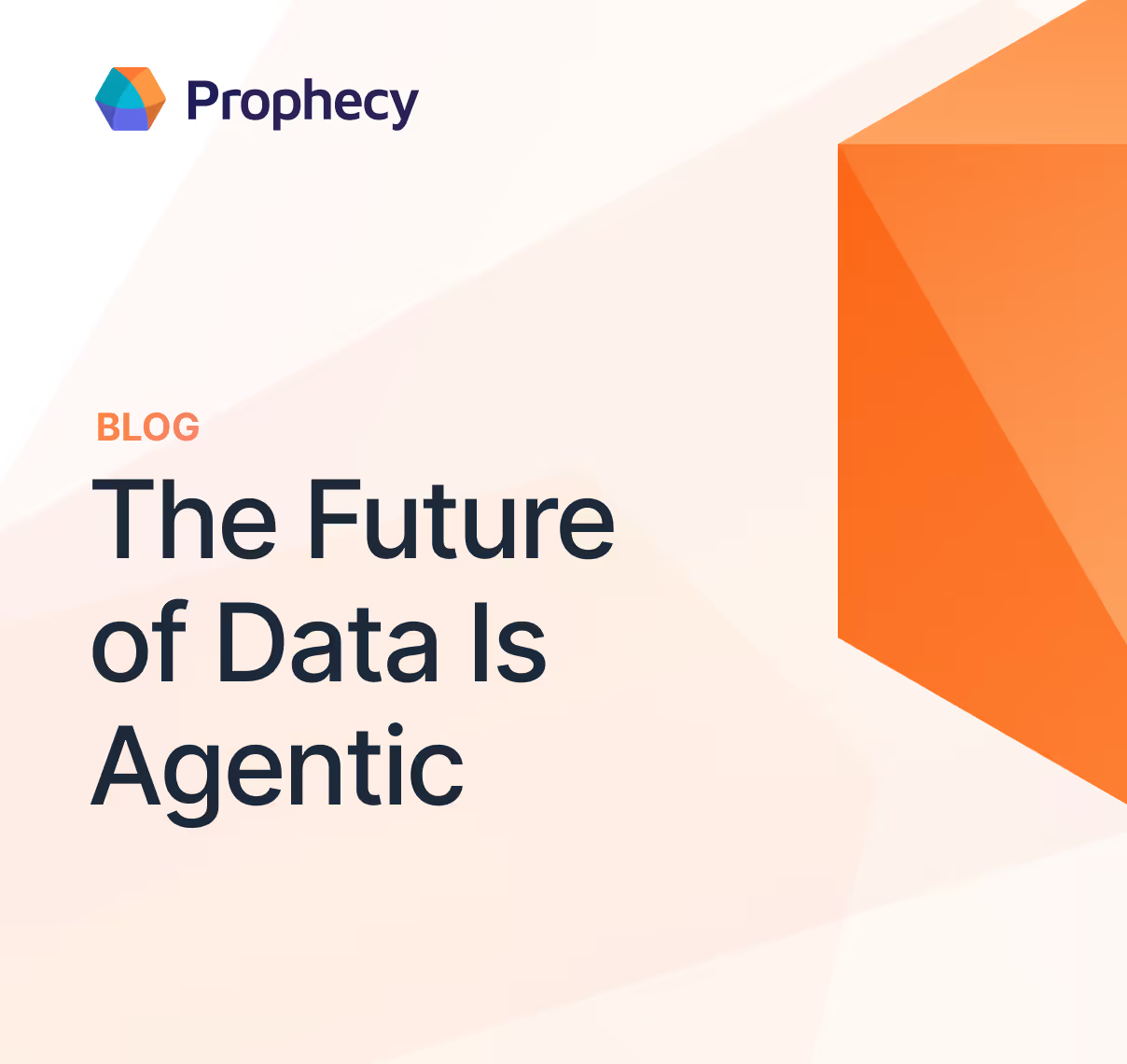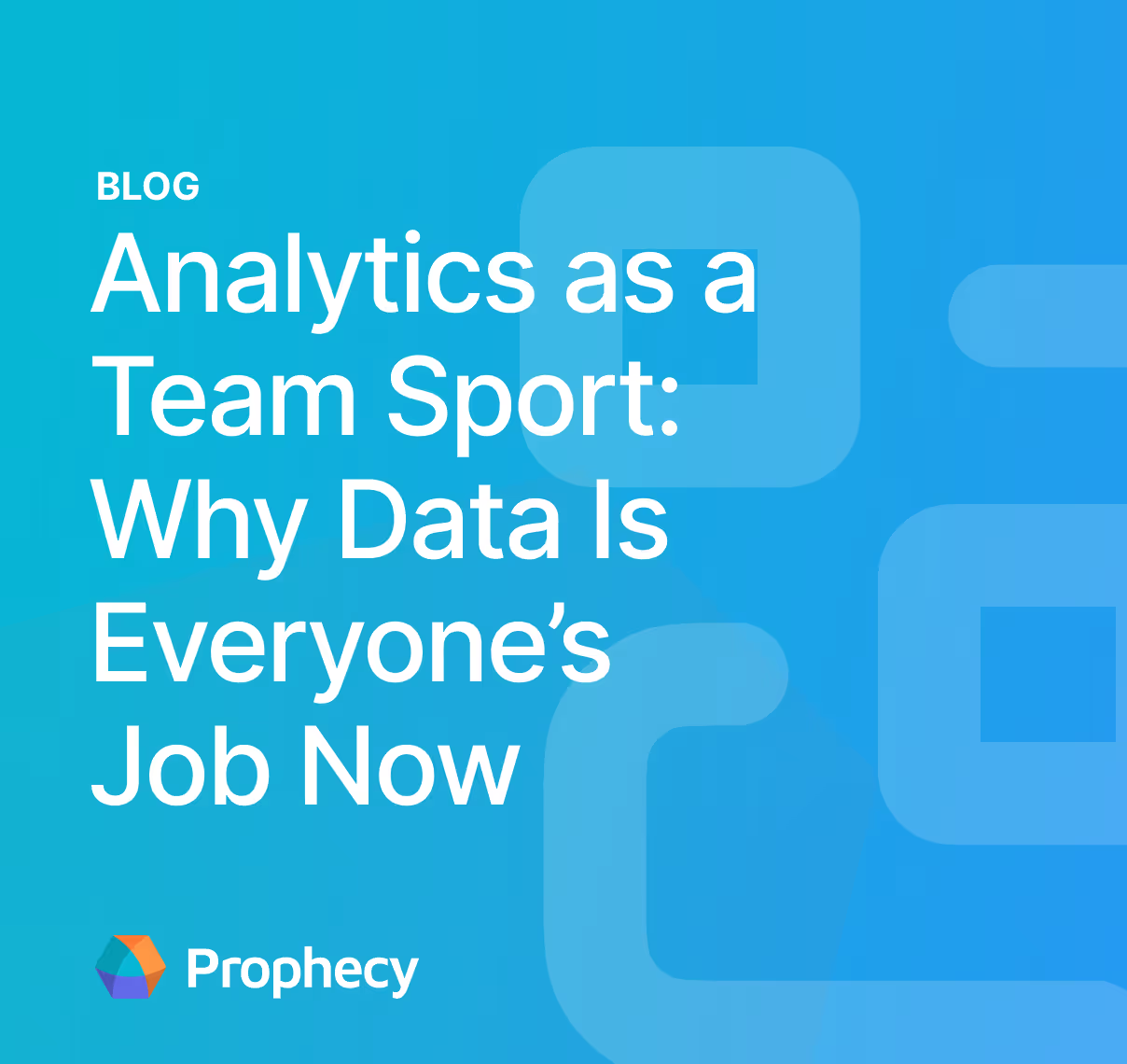Getting started with low-code
Let's create a pipeline using Prophecy's visual, low-code interface for Spark.
Together we’ll build a getting-started pipeline using Prophecy's visual design tool. We’ll read, transform, and write a dataset. Our visual pipeline "ExploreTPCH" will be converted to pySpark code and committed to this repo. This is the first of many Prophecy blogs to use TPC datasets [1] :
“This [TPC-H] benchmark illustrates decision support systems that examine large volumes of data, execute queries with a high degree of complexity, and give answers to critical business questions.” - Source: TPC organization
Let’s build this pipeline together...
- Signup (video 0.5m), create a project, pipeline (video 1m)
- Read a TPC-H table from a Snowflake Database
- Transform the data
- Write out as a Delta Table

transform, and write to a Delta Lake table.
We’ll focus on the LINEITEM table from TPC-H. The table contains approx 6 million records and 16 columns. Each record represents a line-item order for a fictional company. Let’s take a look at table LINEITEM:

The LINEITEM table fits into the TPC-H schema definition as follows:

https://www.tpc.org/tpc_documents_current_versions/pdf/tpc-h_v2.17.1.pdf
The LINEITEM table is usually used to benchmark business queries, so let's try one! Let's do an aggregation with group-by using our visual drag-n-drop interface:

calculations are useful examples for benchmarking in later learning opportunities.
Here we can see how to setup transformations using the visual design.
We’ll order the records and write the resulting file as a Delta table:

In a just a few minutes, we’ve created a visual pipeline across data sources. Prophecy generates Python (or Scala) code based on this visual pipeline. Let’s commit the Python code to a Github repository (mine is here). See the aggregate function written in Python to call the Spark API:

code and committed to the user's Github repo.
That was easy! We completed a standard example query for a TPC-H table. What about exploring and transforming our data? Let's do some data cleaning:
We accomplished a lot in a short blog:
This pipeline committed to Github is ready to be packaged and deployed using SDLC best practices - peer review, unit testing, CI/CD, scheduling, and monitoring. Follow along to get started with your own PySpark pipeline. Overcome the barriers to entry and use this visual tool to build your production-quality benchmarking pipeline. Have a go with low-code tooling and let us know what you think! Ping me or schedule a session with me or my team.
Ready to give Prophecy a try?
You can create a free account and get full access to all features for 21 days. No credit card needed. Want more of a guided experience? Request a demo and we’ll walk you through how Prophecy can empower your entire data team with low-code ETL today.
Ready to see Prophecy in action?
Request a demo and we’ll walk you through how Prophecy’s AI-powered visual data pipelines and high-quality open source code empowers everyone to speed data transformation
Get started with the Low-code Data Transformation Platform
Meet with us at Gartner Data & Analytics Summit in Orlando March 11-13th. Schedule a live 1:1 demo at booth #600 with our team of low-code experts. Request a demo here.
Related content
A generative AI platform for private enterprise data
Introducing Prophecy Generative AI Platform and Data Copilot
Ready to start a free trial?
Lastest posts

The AI Data Prep & Analysis Opportunity

The Future of Data Is Agentic: Key Insights from Our CDO Magazine Webinar


